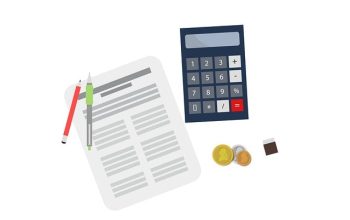Navigating the complexities of financial planning can be daunting, yet understanding the nuances of tax-efficient investments is crucial for building and preserving wealth, particularly in retirement. Entrepreneurs stand to gain significantly from savvy year-end tax planning, which can unlock substantial tax benefits. This article delves into the strategic use of tax-deferred investments as a cornerstone of robust retirement tax planning. We will explore actionable steps for maximizing tax deductions and mastering tax minimization techniques that protect and amplify your financial assets over time. By aligning your investment choices with tax optimization strategies, you can ensure a more secure and comfortable retirement, free from the unnecessary burden of tax exposure.
- Leveraging Tax Benefits for Entrepreneurs: Strategies for Maximizing Year-End Tax Planning
- Navigating Retirement Tax Planning: Utilizing Tax-Deferred Investments to Your Advantage
- Mastering Tax Minimization Techniques: Tips for Protecting and Growing Wealth in Retirement
Leveraging Tax Benefits for Entrepreneurs: Strategies for Maximizing Year-End Tax Planning

Entrepreneurs have a unique opportunity to leverage tax benefits throughout the year, particularly as it draws to a close. By strategically planning and executing year-end tax planning, entrepreneurs can maximize their tax deductions and defer tax liabilities effectively. This proactive approach involves analyzing business operations, expenses, and investments with an eye on tax implications. For instance, making deductible business expenditures before the end of the fiscal year can significantly reduce taxable income. Similarly, investing in qualified retirement plans, which offer tax-deferred growth potential, can be a prudent move for entrepreneurs aiming to secure their financial future. These tax minimization techniques are integral to retirement tax planning, ensuring that hard-earned capital is preserved and allowed to compound over time. By understanding the nuances of the tax code and employing tax-efficient investment strategies, entrepreneurs can safeguard their wealth and create a robust financial legacy.
Maximizing tax deductions isn’t just about identifying opportunities at year-end; it’s about adopting a consistent strategy that aligns with long-term business and personal financial goals. Entrepreneurs should consider utilizing tax-advantaged vehicles such as Section 179, which allows for the expensing of qualifying equipment or property, or Health Savings Accounts (HSAs) that offer triple tax advantages: contributions are often tax-deductible, the funds grow tax-free, and withdrawals for qualified medical expenses are tax-free. Additionally, by deferring income recognition and accelerating deductions where possible, entrepreneurs can optimize their cash flow and tax position. It’s crucial to engage with a tax professional who can provide personalized advice tailored to the unique circumstances of the business and the individual entrepreneur. With careful planning and the right guidance, entrepreneurs can effectively leverage tax benefits to strengthen their financial standing and prepare for a secure retirement.
Navigating Retirement Tax Planning: Utilizing Tax-Deferred Investments to Your Advantage

As individuals approach retirement, the strategic use of tax-deferred investments becomes paramount in navigating retirement tax planning. Entrepreneurs can particularly benefit from these investment vehicles as they offer a means to defer taxes on earnings until a later date, often after retirement when one may be in a lower tax bracket. By contributing to tax-advantaged accounts such as Traditional IRAs or 401(k)s, entrepreneurs can effectively postpone tax liabilities, allowing their investments to compound more robustly without the immediate erosion of returns due to taxes. This strategic planning is not only for the entrepreneurial sector; it’s a prudent approach for anyone seeking to maximize their retirement savings.
Year-end tax planning is an integral component of this strategy, as it allows individuals to make the most of their tax-deferred investment options before the fiscal year concludes. Reviewing and adjusting one’s portfolio at the end of the year can result in significant tax benefits. For instance, timing the realization of capital gains and losses can help manage tax exposure. Additionally, entrepreneurs might consider making deductible contributions to retirement accounts or converting traditional IRAs to Roth IRAs if financially advantageous. By leveraging these techniques as part of a broader tax optimization strategy, individuals can protect and grow their wealth more effectively, ensuring that their hard-earned savings are preserved for when they truly need them in retirement.
Mastering Tax Minimization Techniques: Tips for Protecting and Growing Wealth in Retirement

For entrepreneurs, understanding the tax benefits available to them is a critical component of effective retirement planning. Utilizing year-end tax planning can significantly impact the amount of taxes owed and thus, the amount of wealth that can be saved or invested. Entrepreneurs should consider maximizing tax deductions by taking advantage of business expenses and retirement contributions that are tax-deductible. By doing so, they not only reduce their current year’s taxable income but also set a foundation for future tax-deferred investments, which are instrumental in building long-term wealth.
Retirement tax planning is an ongoing process that requires a strategic approach to optimize one’s financial situation post-employment. It involves identifying the most tax-efficient investment vehicles and accounts, such as Roth IRAs or 401(k)s, which can offer substantial tax benefits when used correctly. Additionally, understanding the tax implications of different investment types, like mutual funds, real estate investment trusts (REITs), or annuities, is crucial. By employing tax minimization techniques such as converting traditional IRAs to Roth IRAs in lower-income years or taking required minimum distributions (RMDs) strategically, individuals can preserve their gains and enhance the growth of their retirement savings. These actions, combined with a comprehensive year-end tax planning strategy, ensure that one’s wealth is not only protected from unnecessary tax exposure but also positioned to grow effectively over time.
In conclusion, a prudent approach to retirement planning is incomplete without the integration of tax-efficient investment strategies. By leveraging tax benefits for entrepreneurs and engaging in meticulous year-end tax planning, individuals can maximize their tax deductions and optimize their financial standing. The strategic use of tax-deferred investments within the scope of comprehensive retirement tax planning is instrumental in preserving wealth. Furthermore, mastery of tax minimization techniques not only protects your accumulated capital but also amplifies its growth potential over time. This multi-faceted approach ensures that your retirement years are secure and that your financial legacy endures.



